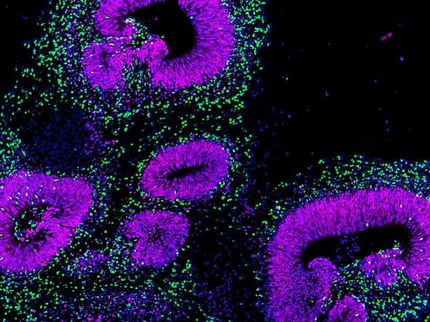New computational method to uncover gene regulation
Scientists have developed a new computational model to uncover gene regulation, the key to how our body develops -- and how it can go wrong
Researchers from The University of Manchester (UK), Aalto University (Finland) and the European molecular biology Laboratory Heidelberg (Germany), say the new method identifies targets of regulator genes.
The human genome contains instructions for making all the cells in our body. An individual cell's make up (e.g. muscle or blood) depends on how these instructions are read. This is controlled by gene regulatory mechanisms. Uncovering these mechanisms holds a key to greatly improving our understanding of biological systems.
One important regulatory mechanism is based on genes that actively promote or repress the activity of other genes. The new research addresses the problem of identifying the targets these regulator genes affect.
The new method, presented in Proceedings of the National Academy of Sciences (PNAS), is based on careful modelling of time series measurements of gene activity. It combines a simple biochemical model of the cell with probabilistic modelling to deal with incomplete and uncertain measurements.
Dr Magnus Rattray, a senior researcher at Manchester's Faculty of Engineering and Physical Sciences, said: "Combining biochemical and probabilistic modelling techniques as done here holds great promise for the future. Many systems we are looking at now are too complex for purely physical models and connecting to experimental data in a principled manner is essential."
Dr Antti Honkela, his colleague at Aalto University School of Science and Technology, added: "A major contribution of our work is to show how data-driven machine learning techniques can be used to uncover physical models of cell regulation. This demonstrates how data-driven modelling can clearly benefit from the incorporation of physical modelling ideas."
Organizations
Other news from the department science

Get the life science industry in your inbox
By submitting this form you agree that LUMITOS AG will send you the newsletter(s) selected above by email. Your data will not be passed on to third parties. Your data will be stored and processed in accordance with our data protection regulations. LUMITOS may contact you by email for the purpose of advertising or market and opinion surveys. You can revoke your consent at any time without giving reasons to LUMITOS AG, Ernst-Augustin-Str. 2, 12489 Berlin, Germany or by e-mail at revoke@lumitos.com with effect for the future. In addition, each email contains a link to unsubscribe from the corresponding newsletter.





















































